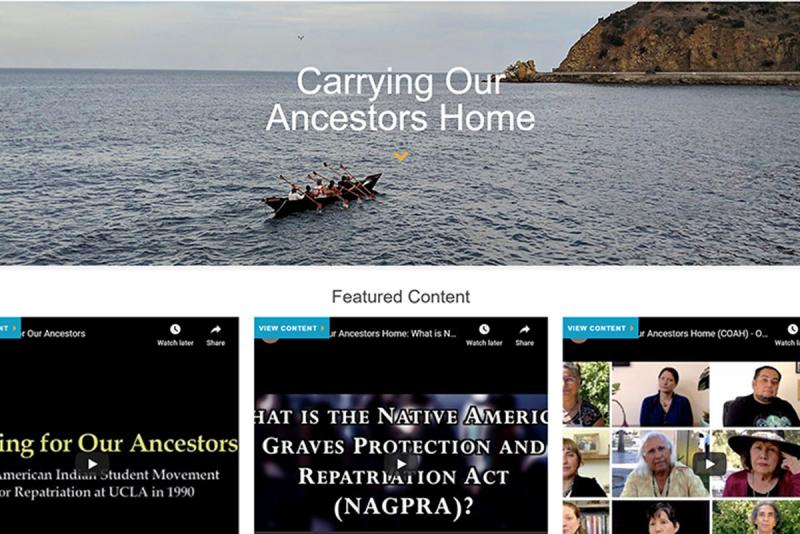Indigenous Voices in Repatriation

by Sedonna Goeman-Shulsky, Wendy Teeter, and Mishuana Goeman
There have been several books and articles written over the years about the Native American Graves Protection & Repatriation Act (NAGPRA) and international repatriation efforts, but few are first authored by Native practitioners. With so many pressing issues and privacy concerns, there is little time to publish articles about the work they are doing, and as such the field of published analyses or accounts of NAGPRA work is heavily weighted towards academic and museum perspectives. Outside of official consultation, tribal practitioners’ perspectives are rarely heard by non-Native museum professionals and academics in the discussion of NAGPRA.
Carrying Our Ancestors Home, an online educational platform, seeks to make tribal experiences heard and valued in the field of NAGPRA and archaeology. COAH hosts resources and communities of practitioners, as well as creates original videos based on interviews with practitioners across Indian Country. The original videos are compiled from interviews with tribal experts in repatriation and cultural heritage protection, and address common questions about NAGPRA and repatriation work. They are intended for use in the classroom, and alongside resources that can be assigned as readings to support the content of the videos. In addition, it provides a history of NAGPRA implementation at UCLA and the events that contributed to its current state and deep involvement of Native American students, faculty, and community members.
Recently, COAH’s team endeavored to broaden the scope of information distributed on the site to encompass cultural heritage preservation generally by creating educational modules fit for undergraduate classroom use. The first of these modules, to be posted during the summer, is “What is NAGPRA?” authored by Wendy Teeter and Sedonna Goeman-Shulsky. It provides an original video based on practitioner interviews, primary sources collected from UCLA’s NAGPRA archives, secondary sources that bolster a true understanding of the law and process, and a lesson plan with an activity to tie each element together for classroom use. COAH’s digital archivist Maria Montenegro will complete a second module exploring the reasons for different institutional approaches to repatriation under NAGPRA.
Having tribal voices addressing common questions about repatriation and cultural heritage protection in the classroom is vital. Often professors who teach NAGPRA have no experience in its application nor understand the ethics and structural racism that required NAGPRA and Indigenous archaeology.
To this point, Sedonna Goeman-Shulsky (Tonawanda Band of Seneca) reflected on her experience in an Anthropology ethics class project on NAGPRA:
My partner was brand new to archaeology, and this was her first class on the topic, so she sought help from the professor for her portion of the presentation. The night before we were to present, my partner informed me that she no longer believed that NAGPRA was a necessity, and that it infringed on the scientific right to research, NAGPRA was a religiously grounded law and was as such unethical. She had gathered these perspectives at the advice of our professor. The presentation then became myself, the only Native student in the classroom, debating the ethics of repatriation with my white partner while the professor watched on with no comment. It was insanely infuriating to have to argue for the human rights of my ancestors with no support from the supposed authority at the college on archaeological ethics.
We hope COAH will serve to increase understanding of what tribal practitioners do and think about in terms of repatriation, and to create a better generation of archaeologists, museum professionals, and cultural heritage protectors.


